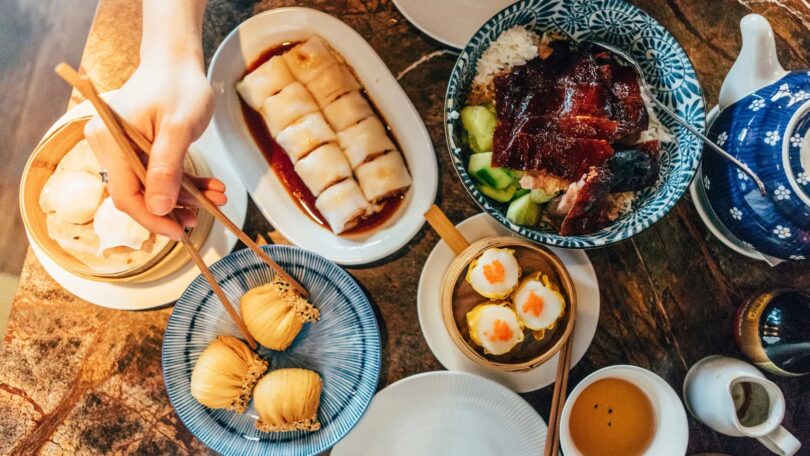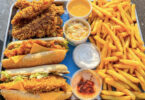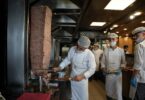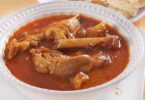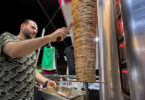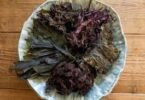Chris Dwyer
With around 17,000 places to eat in Hong Kong, you’re never far from a steaming bowl of something delicious. The city’s culinary landscape features world-class Michelin-starred tasting menus and fine dining, but the majority of restaurants are humble, local spots where the prices are low and the proudly Cantonese dishes are comforting.
The combination of cramped home kitchens and expensive groceries means that for many, dining out is more cost-efficient than cooking at home. Consequently, brightly lit tea houses and noodle shops, busy takeaway stands and full-service restaurants all compete for an annual dining market where diners spend the equivalent of almost £9.2bn.
If you ask almost anyone in the city, they’ll invariably have their own suggestion of where to find the best version of a particular dish. We’re confident, however, that you can’t go wrong at these eight tried-and-tested spots serving beloved Cantonese classics, from bamboo steamers filled with dumplings to glistening roast meats on rice.
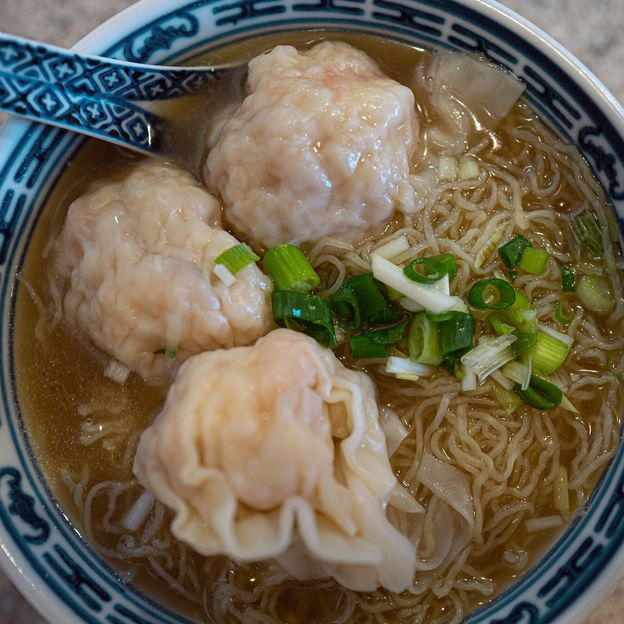
The prawn wonton noodles at Tsim Chai Kee are both delicious and affordable (Credit: Redonion1515/Getty Images)
1. Prawn wonton noodles: Tsim Chai Kee
Accolades from past editions of the Michelin Guide are proudly displayed on the walls and in the window at Tsim Chai Kee, located just off the famed outdoors escalator in the heart of Central district. It may come as a surprise, then, that prices for their classic Cantonese comfort food of prawn wonton noodles are decidedly wallet-friendly.
Just HK$38 (£4) buys you a generous bowl featuring three handmade dumplings each the size of a golf ball. Two prawns are used per dumpling, chopped up and mixed with fatty pork and dried mandarin peel to bind it, adding subtle notes of flavour as you bite through the soft folds of dumpling skin for a textural masterpiece.
Underneath sit bouncy egg noodles, while the fragrant broth is made from simmered pork bones with prawn heads, shells and air-dried cod, before the bowl is finished with a scattering of chopped spring onions.
As steam mists up the kitchen, visible through a service hatch, chefs also plate up noodles with two other topping options: sliced beef or fish balls made from dace fish – or even all three in the same bowl, if you’re feeling hungry.
Address: Shop B, G/F, 98 Wellington St, Central
Phone: +852 2850 6471
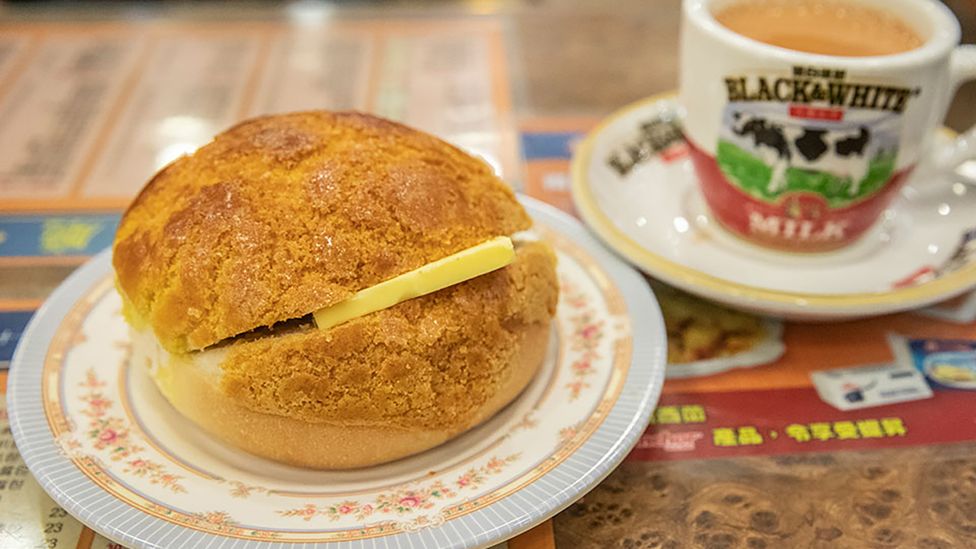
Be sure to order a Hong Kong milk tea with your pineapple bun at Kam Wah Cafe & Bakery (Credit: Hong Kong Tourism Board)
2. Pineapple bun: Kam Wah Cafe & Bakery
Pineapple buns are a popular local snack and few spots can match Kam Wah Cafe & Bakery, especially when it comes to history. This year marks half a century since Chan Tim-wo, the son of a baker, opened his cafe serving the delicious sweet rolls in the always-on Mong Kok district, where a constant line of customers testifies to their popularity.
Chan’s recipe, passed down by his father-in-law, has more than stood the test of time. While you’d expect the spiky tropical fruit to be the hero, confusingly there is, in fact, no pineapple at all in pineapple buns. The name actually comes from their crusty domed appearance that resembles pineapple skin.
That flaky, crunchy sweet crust atop the soft and fluffy bun is definitely best experienced hot from the oven, complete with a thick, cold pat of butter that quickly melts. To accompany, a cup of strong Hong Kong milk tea, made with either evaporated or condensed milk, is a non-negotiable.
As buttery aromas waft around you, check out the other options, including their egg tarts. But just make sure you know what you’re ordering before calling staff over as service can generously be described as “brisk”.
Address: 45-47 Bute St, Mong Kok
Phone: +852 2392 6830Instagram: @kamwahcafe
3. Dim Sum: Dim Dim Sum
Arguably Hong Kong’s most famous culinary export, dim sum translates from Cantonese as “touch the heart” and few food traditions are as iconic. Options abound, including historic Luk Yu Tea House with its Art Deco interiors, or Maxim’s Palace City Hall, where steaming baskets of dumplings, rice noodle rolls and more are served from trolleys pushed around the vast dining room.
But a relative newcomer in the form of Dim Dim Sum has won legions of fans since opening in 2010. Despite being open from 11:00 until 02:00, a line outside the door is pretty much always guaranteed – but it’s worth the wait.
Ordering is a breeze from the tick-box menu, which includes dozens of dishes from steamed rice noodle rolls called cheung fun generously stuffed with barbecued pork and courgette to delicate shrimp har gow dumplings with an almost translucent skin.
Chicken feet may not to be everyone’s taste but here they’re a textural joy, while lo mai gai, steamed glutinous rice and chicken wrapped in lotus leaf, is another great rendition. Don’t miss their char siu bao, fluffy steamed buns hiding fabulously sticky and sweet roast pork.
The air conditioning here can feel Arctic, so don’t linger too long before tucking in. Nobody likes a cold dumpling.
Website: http://www.dimdimsum.hk/
Address: G/F, 112 Tung Choi Street, Mong Kok
Phone: +852 2309 2300
Instagram: @dimdimsumhk
4. Curry fishballs: Fishball Man
The definition of humble street food, fishballs (jyu daan) were first made by Chiu Chow people from China’s Guangdong Province who turned parts of fish generally left uneaten into a paste, before rolling them into balls and boiling them.
Known as “fish eggs” when translated from Cantonese, these treats were traditionally made by hand and served in noodle soup in China, but Hong Kong places started frying them until golden brown then slathering them in curry sauce.
Fishball Man in To Kwa Wan is little more than a stand, with no seats – but this is, after all, food that is meant to be eaten on the go. Served simply in a paper cup, along with a stick to skewer them, their fish balls feature that bouncy, springy texture that is so sought-after in Cantonese cuisine and are distinguished by the accompanying sweet-spicy sauce.
While you’re here, it’s worth trying the small, yellow fish-paste dumplings called siu maithat are the perfect platform for the sauces lined up in squeezy bottles along the counter.
Street address: 50 Tin Kwong Road, To Kwa Wan
Phone number: +852 9727 3347
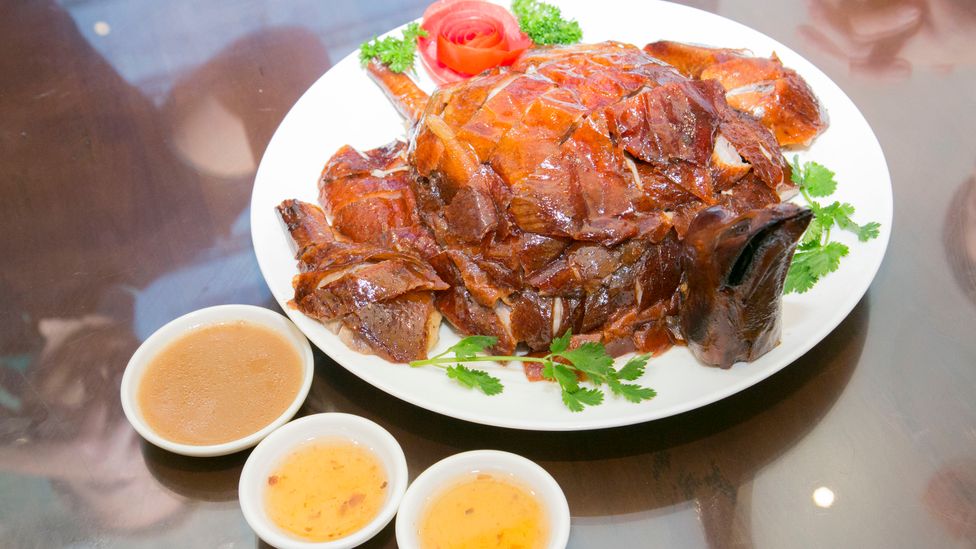
Kam’s Roast Goose serves up one of the world’s cheapest Michelin-starred meals (Credit: Hong Kong Tourism Board)
5. Roast goose: Kam’s Roast Goose
A line outside a restaurant’s door is always a good sign, and Kam’s Roast Goose in the Wan Chai district has a permanent one as soon as they open at 11:00. Diners of all persuasions, from office to construction workers, students to tourists, are drawn in for a true Hong Kong classic: roast goose on rice.
Honoured with a Michelin star – a fact you can’t miss when standing outside, given the prominent branding – it famously makes for one of the world’s cheapest Michelin-starred meals. A rice set with roast goose will only set you back HK$55 – about £5.60.
Goose is just one of the roast meats on offer, glistening as they hang in the small kitchen space before being deftly prepped by cleaver-wielding chefs. The goose itself is sensational thanks to the combination of tender, succulent and juicy meat with perfectly crispy skin. Plum sauce on the side is a must.
You can also order roast goose leg in noodle soup, marinated goose feet, cured goose liver sausage or even roast goose neck and head as a side dish.
Website: www.krg.com.hk/!en/
Address: G/F Po Wah Commercial Center, 226 Hennessy Road Wan Chai
Phone: +852 2520 1110
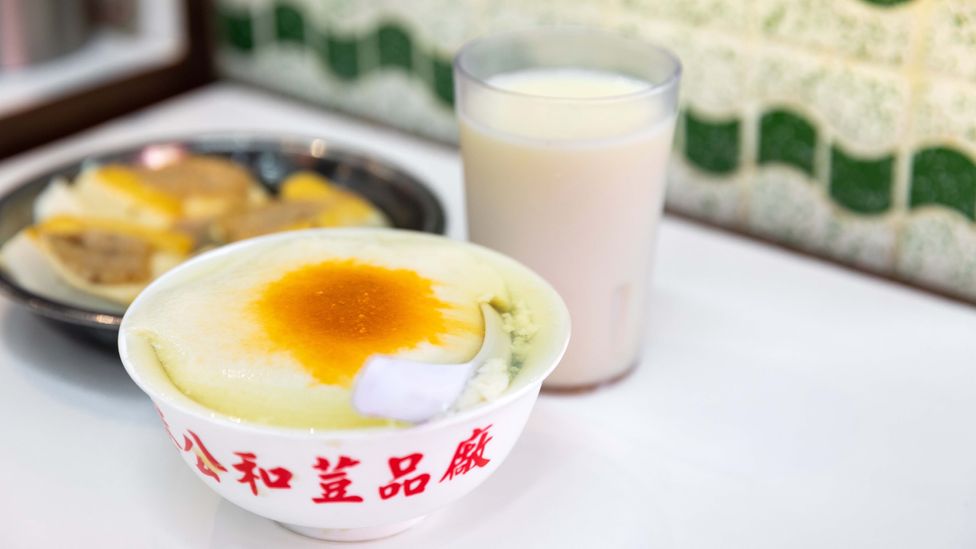
Head to Kung Wo Dou Bun Chong for silky-smooth tofu pudding with brown sugar and ginger syrup (Credit: Hong Kong Tourism Board)
6. Sweet tofu pudding: Kung Wo Dou Bun Chong
On the elegantly tiled wall in the atmospheric tofu shop Kung Wo Dou Bun Chong, there’s an image of a pair of golden scales on a circular black background. The symbol historically represented a merchant’s integrity, ensuring that you would get what you pay for.
Kung Wo Dou Bun Chong has existed in some form – in different locations – since 1898, but one thing has remained constant: their devotion to making and serving the freshest tofu. Today, it’s still crafted 18 hours a day in a cramped kitchen at the back of the shop in the working-class neighbourhood of Sham Shui Po.
First the soybeans are soaked to soften them, before they’re ground under a hand-operated granite millstone that dates back more than a century. The technique ensures maximum smoothness, before water is added to make soy milk which is then poured into a large wooden barrel, strained through muslin cloth, then boiled. The result is a bowl of silky-smooth tofu, served hot or cold, with optional brown sugar and ginger syrup.
Open from 06:00 daily, other popular orders include bean curd puffs, deep-fried tofu and sugar-free soy milk. They have also expanded next door into a modern air conditioned shop – but it lacks the charm of the original.
Facebook: https://www.facebook.com/kungwosoya
Address: 118 Pei Ho St, Sham Shui Po
Phone: +852 2386 6871
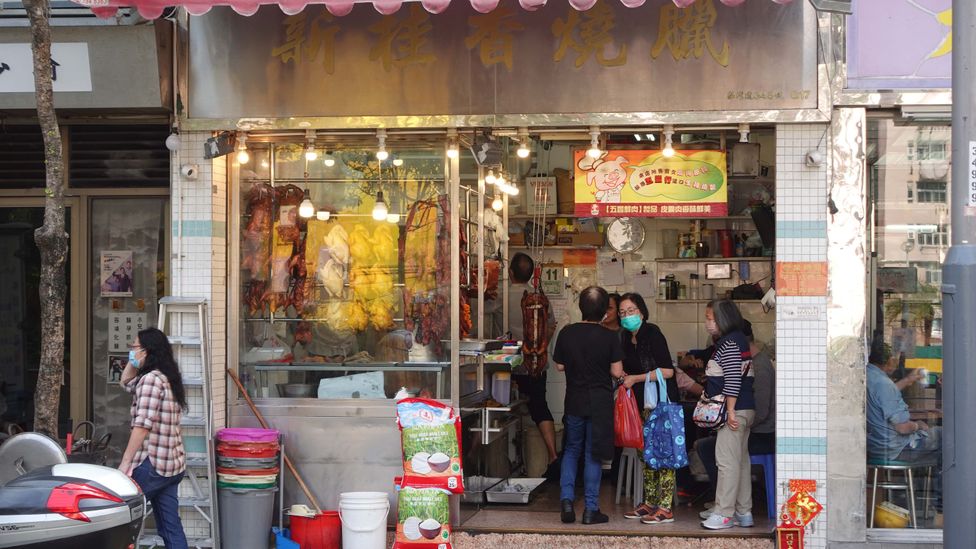
Sun Kwai Heung in Chai Wan tops many lists of the best char siu in Hong Kong (Credit: Chris Dwyer)
7. Char siu pork on rice: Sun Kwai Heung
Back in 2016, the words char siu were added to the Oxford English Dictionary. They translate as “roasted on a fork” and are indelibly linked with Cantonese barbecued roast pork. Given its addictive, caramelised and charred crust, it holds legendary status in the pantheon of Hong Kong cuisine and is served everywhere from three-Michelin-starred restaurants like Lung King Heen through to the most humble local joint.
Char siu obsessives debate endlessly about the various merits of one spot over another, but the ratio of fat to lean meat and savoury-sweetness of marinade – while still highlighting the original pork flavour – combine to put Sun Kwai Heung atop many lists.
While no self-respecting Chinese chef would ever give up their marinade secret, honey or sugar, soy sauce, rice wine, Chinese five-spice powder and garlic cloves commonly feature. The marinated cuts, taken from the pork collar in the pig’s shoulder are skewered on the “forks” that give char siu its name and then roasted vertically.
Doing so ensures that they are perfectly cooked all the way around, without too much oiliness when you bite into them. Sun Kwai Heung may sit in Chai Wan at the far end of the main subway line on Hong Kong Island, but that doesn’t stop diners from making a pilgrimage for beautiful renditions. Most get it to go, but there are a handful of tables if you can’t wait that long.
Address: Ground floor, 17 Kam Tam Yun House, 345 Chai Wan Rd, Chai Wan
Phone: +852 2556 1183
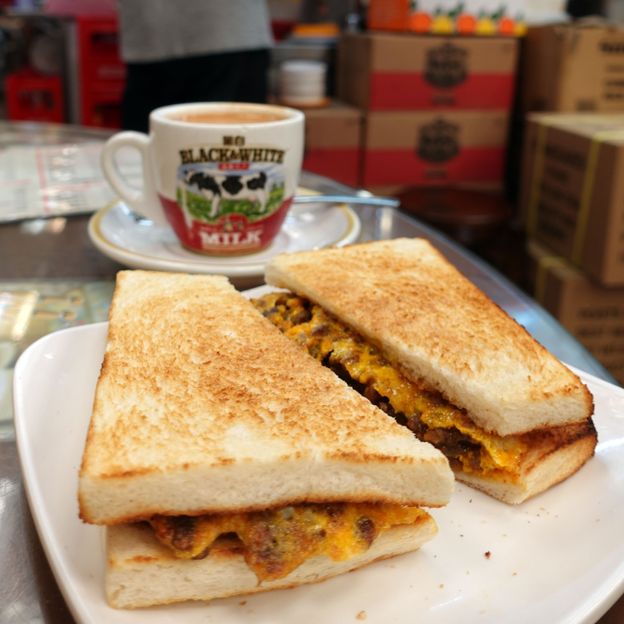
Classic comfort food is on the menu at Sun Hang Yuen Tea House, including scrambled egg and beef sandwiches (Credit: Chris Dwyer)
8. Scrambled egg and beef sandwich: Sun Hang Yuen Tea House
Cha chaan teng is the name given to iconic local Hong Kong “tea restaurants” serving up modestly priced food and drinks. A fine example of one is Sun Hang Yuen Tea House in Mong Kok, which has been in business since 1968 and is open daily from 06.30 until just before midnight.
Boxes of Black & White-brand evaporated milk, Pure Ceylon tea and loaves of white sliced bread are stacked high against the counter, while faded red plastic banquettes or round tables with stools are shared by diners from every walk of life, poring over laminated menus that also come in English.
Comfort food is the order of the day in dishes such as beef brisket noodle soup or pork chop with Portuguese curry sauce, but many diners come for quick bites involving sandwiches. Be sure to try their scrambled egg and beef sandwich, which is simple but moreish on bread or toast, with Sichuan spices adding a welcome kick. Hong Kong-style milk tea is a must-order alongside.
On leaving, check out the narrow alleyway that runs alongside the tea house and features an old school outdoors barber shop, where clients recline under maroon sheets.
Courtesy: BBC

